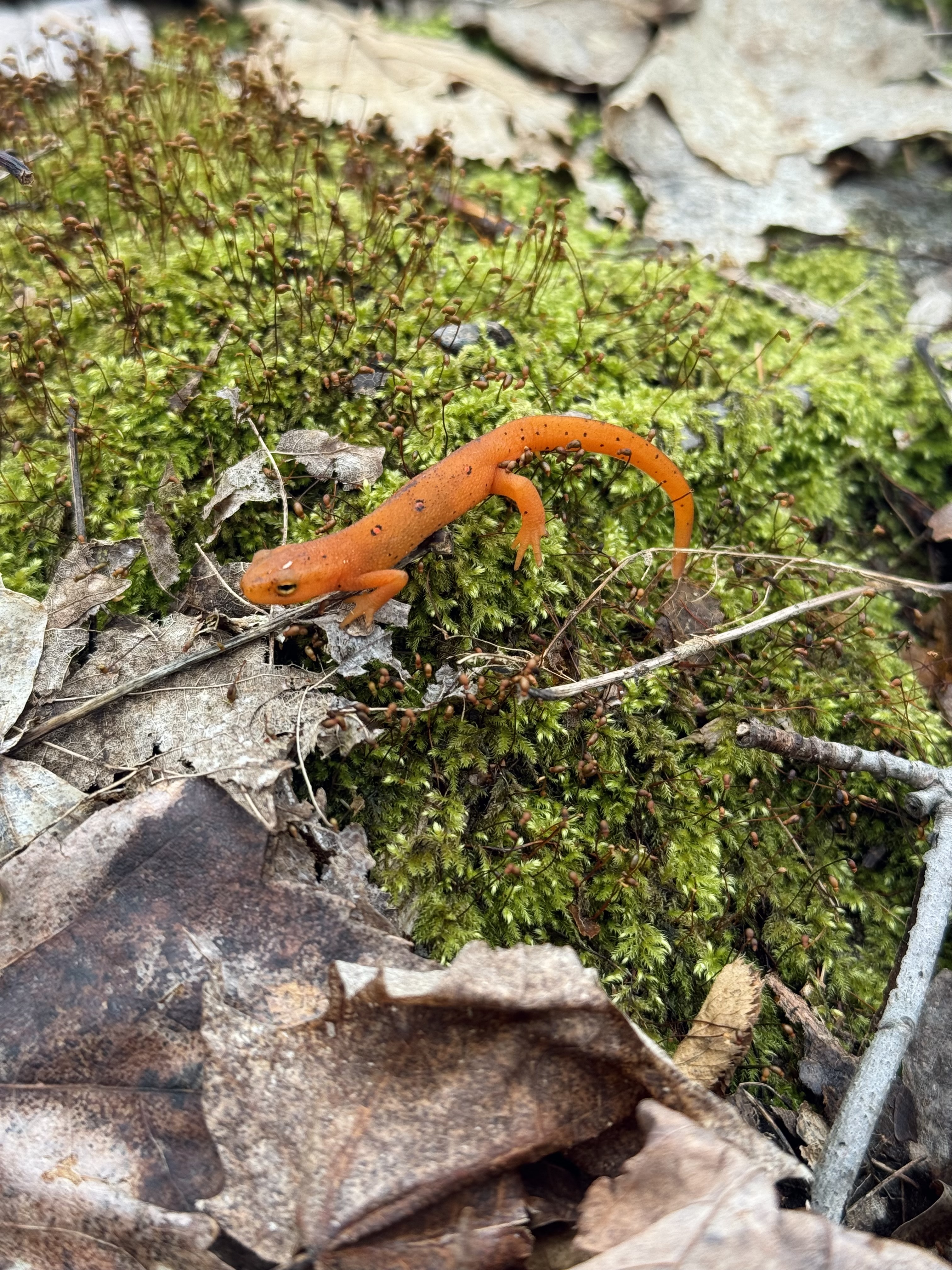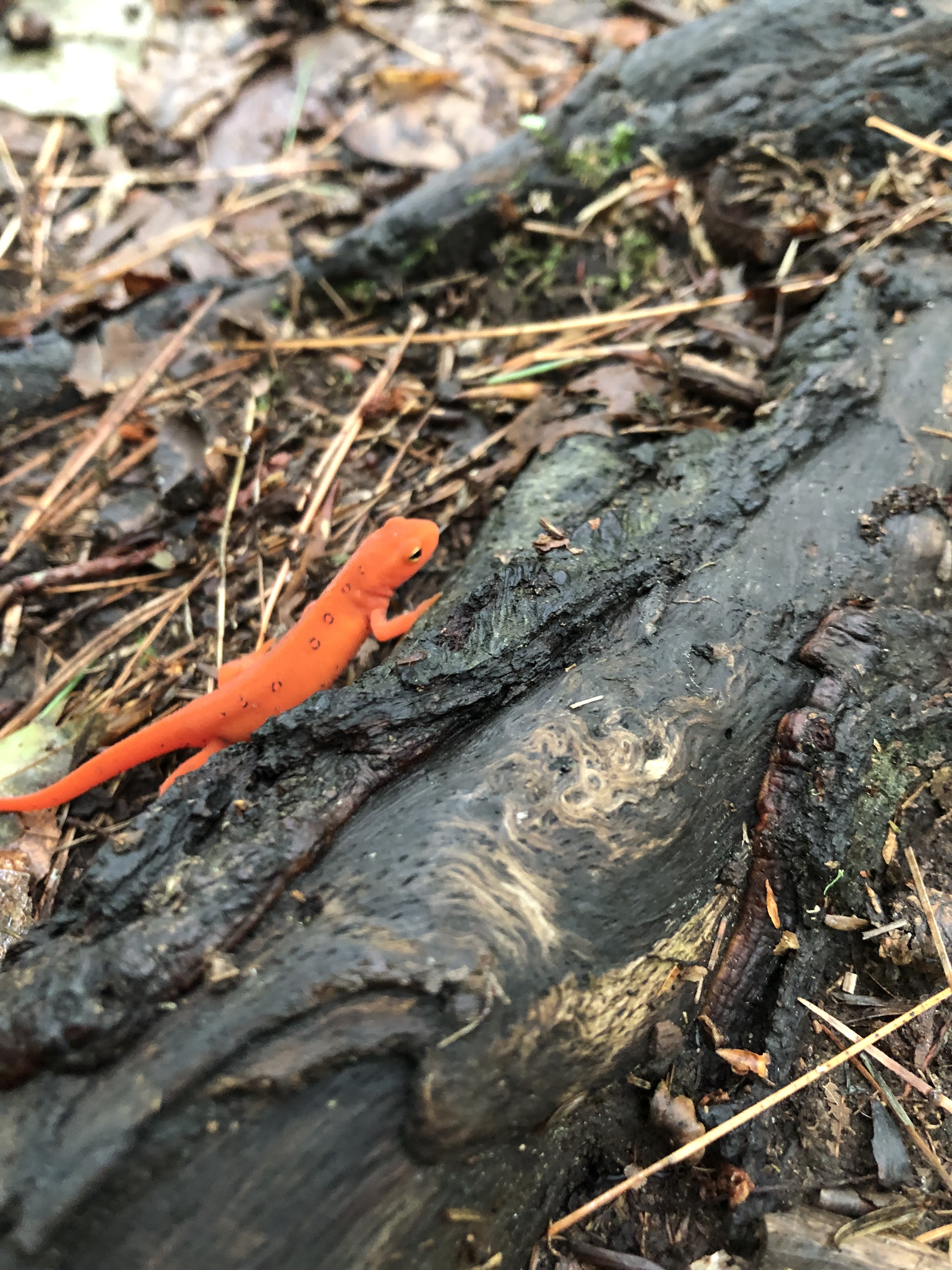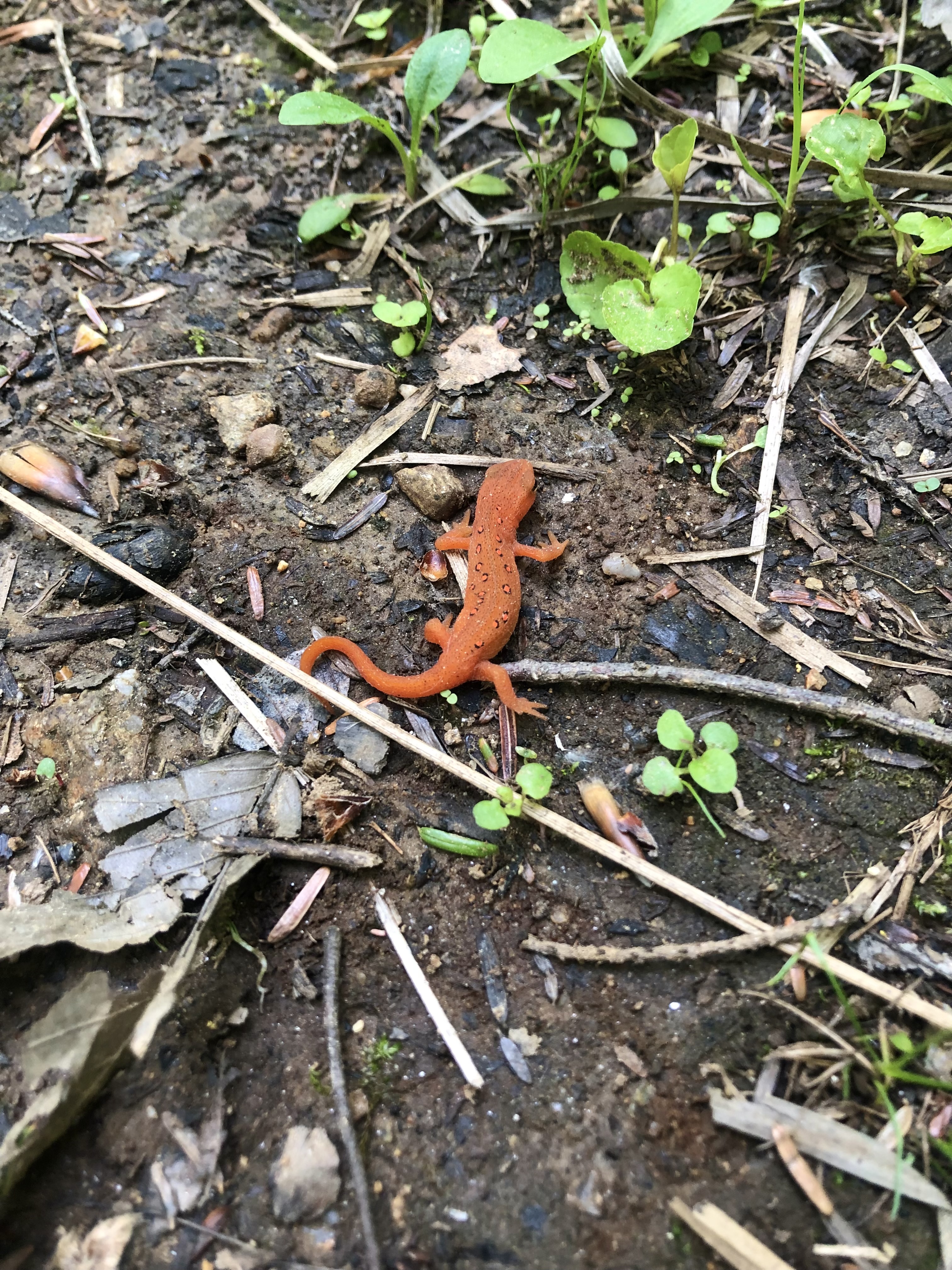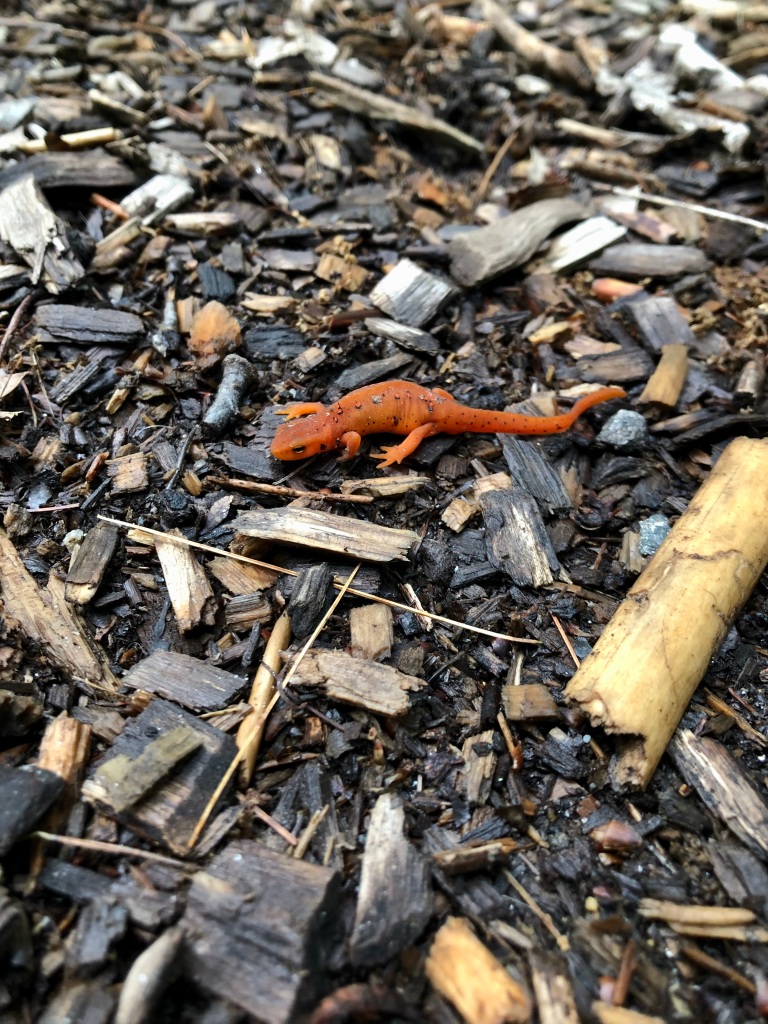Between April and July, when the trails are free of snow and damp from spring showers, the salamanders come out in droves. It’s during this time that they emerge from their muddy winter hide out in search of a vernal pool. In this journey, they take to the same trails that many of us hikers use. The Eastern Spotted Newt, in its juvenile stage, is a vibrant orange. It signals to predators that they should not eat this creature and has the added benefit of being highly visible to hikers who are liable to step on them.
If you keep your eyes down on the trail this season, you’re likely to spot one. Trails which are shady and wet will be the best place for viewing. Even though they do produce a toxin which is harmful to any animal (including humans) when ingested, they are not toxic to the human touch. On a high-traffic trail, if I see one in the middle, I’ll gently pick them up and place them on a nice shady patch of moss to the side of the danger zone. To the chagrin of my husband, I also stop at nearly every newt I see to snap a picture, altering the pace of the hike. They’re just too cute to pass by without capturing in a photo.



